Metadata agents for Salesforce operations
Sweep’s Agentic Layer equips admins and RevOps teams with AI agents purpose-built for Salesforce metadata. These agents document, monitor, and optimize your org so you can reduce drag, prevent breakage, and keep systems adaptive.

Metadata agents features and capabilities
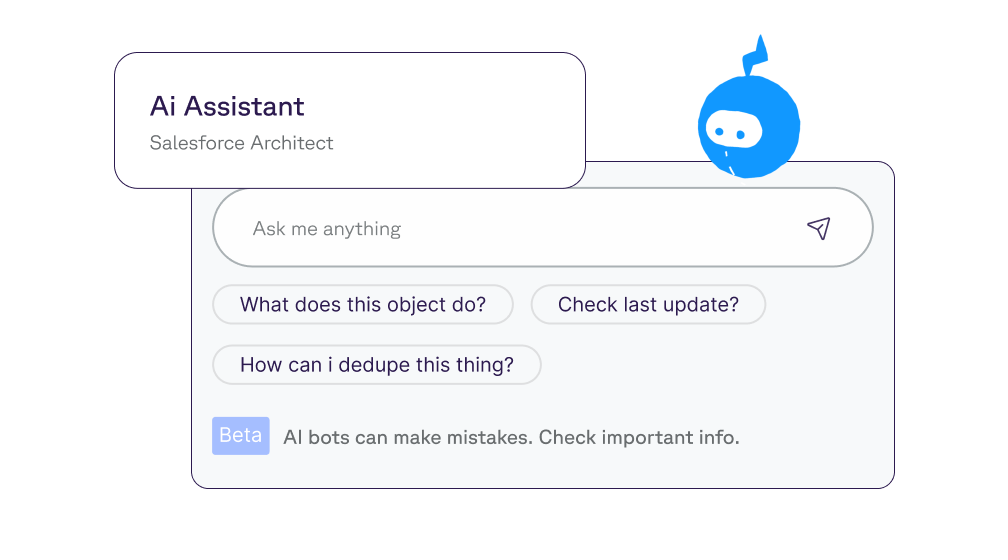
Documentation that answers back
Your metadata comes alive with an agent that explains itself.
- Ask: “What updates this field?” → get the logic, dependencies, and history instantly
- Generate living documentation that never goes stale
- Explore upstream and downstream impact with conversational clarity
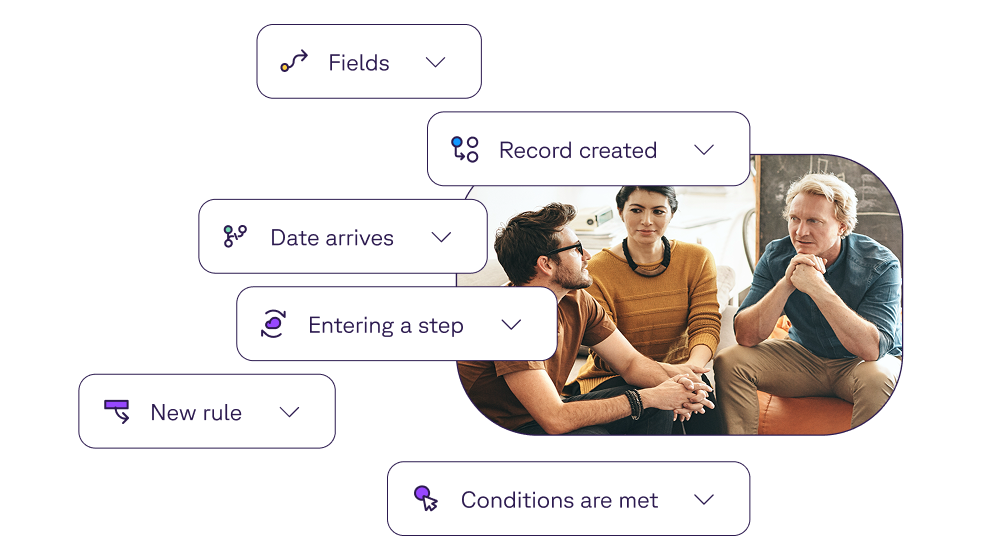
Monitoring that never sleeps
An always-on agent that guards your org like a system watchdog so you stay ahead of risks with proactive detection and prioritized recommendations.
- Continuously scans for risks, misconfigurations, and governor-limit threats
- Surfaces issues ranked by severity with plain-English explanations
- Get clear remediation steps with evidence and impact context
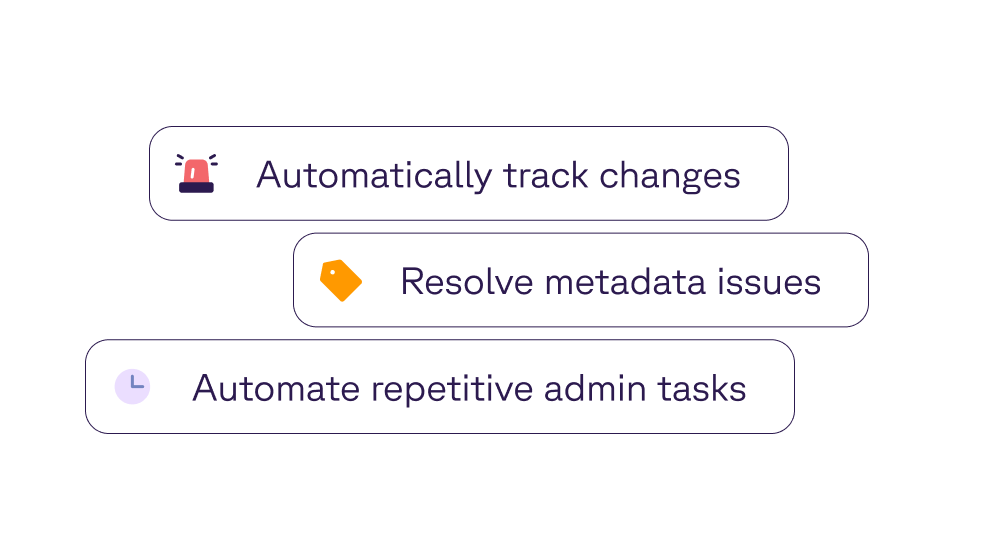
Permissions questions, answered instantly
Ask questions about your Salesforce security in plain English. Analyze permissions, troubleshoot access issues, and prepare for audits in minutes.
- Ask “Which profiles have ModifyAllData?” and see exactly where high-risk permissions live and how many users are affected.
- Ask “Why can’t this user edit Opportunities?” and trace the blocking profile, permission set, or field-level setting.
- Ask “Compare these two profiles” and get a side-by-side breakdown without exporting reports.
- Ask “Show me users who haven’t logged in” and identify inactive users and reclaim unused licenses.

Org analysis on demand
An agent that can map your Salesforce landscape in seconds.
- Ask for a full inventory of automations, objects, or fields
- Run a real-time health check without weeks of manual discovery
- Collapse technical audits from days to minutes with agent-powered analysis
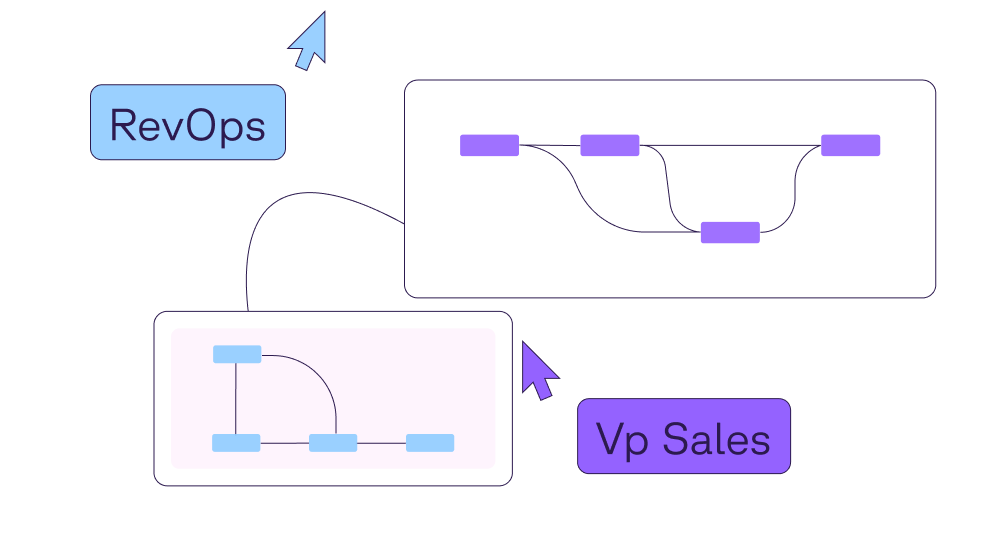
Tech debt cleanup without the guesswork
An agent that shines a light on clutter and fragile logic.
- Detect overlapping flows, redundant rules, and hardcoded values
- Recommend what to merge, retire, or refactor
- Reduce complexity and prevent hidden drag from piling up
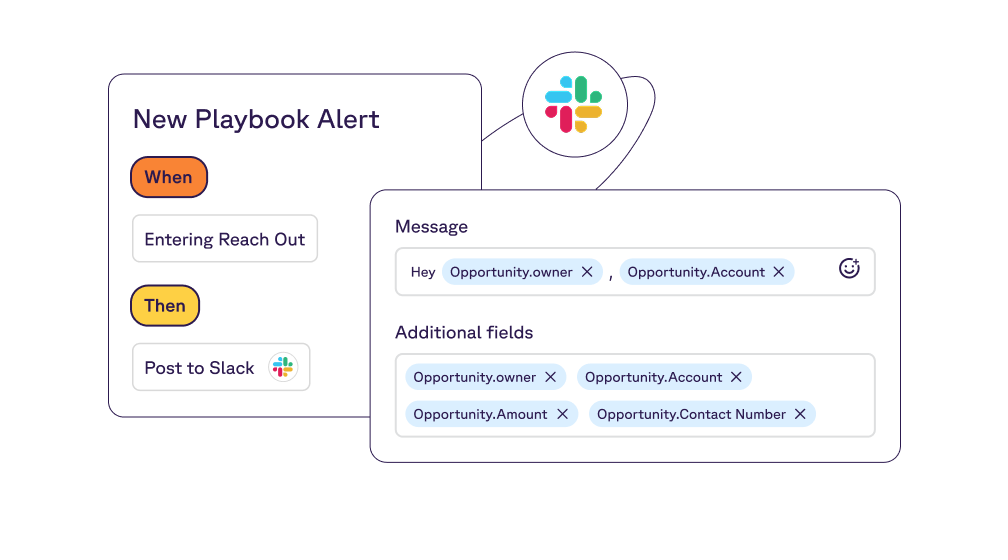
Workflow migration made easy
An agent that guides you through legacy to modern.
- Audit every Workflow Rule and Process Builder in plain English
- Ask: “What should this look like in Flow?” and get step-by-step guidance
- Generate phased migration plans with dependencies mapped
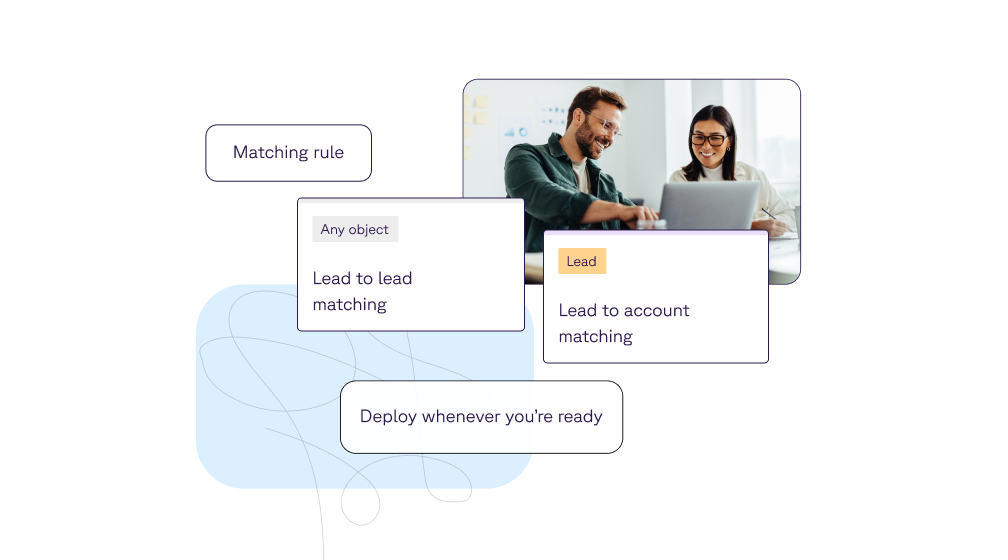
Field hygiene in real time
An agent that keeps your data model clean, lean, and efficient.
- Identify low-usage, duplicate, or redundant fields instantly
- Explore dependencies to understand downstream impact before removal
- Improve reporting accuracy and system performance

Framework alignment at your fingertips
An agent that checks your process against proven frameworks.
- Ask: “Does our opp process align with MEDDICC?” → get the gaps and fixes
- Generate BANT/MEDDICC checklists directly from metadata
- Recommend process optimizations that boost adoption and consistency
Real users. Real time saved.

Challenge:
Deputy’s Salesforce org carried over 16 years of legacy code and technical debt. Built originally by engineers with hard-coded logic, the system was difficult to audit and understand. Manual discovery would have taken months.
Implementation:
Using Sweep’s metadata agents, Deputy’s RevOps and Solutions Architecture team instantly surfaced hundreds of Flows, thousands of custom fields, and over 300,000 records, mapping every dependency and automation across the org.
Results:
- 99% faster discovery (two weeks of digging reduced to 20 minutes)
- 3x faster troubleshooting and issue resolution
- Dozens of hours saved per month for the systems team
“What used to take two weeks of digging now takes just 20 minutes. Being able to get into a Flow and ask the AI agent what is happening is invaluable.”


Frequently Asked Questions
Get quick answers about how Sweep Salesforce metadata agent support your systems, teams, and Salesforce workflows.
Metadata agents are AI copilots built specifically for Salesforce. They operate on metadata—the blueprint of your CRM—to provide instant documentation, risk detection, and optimization recommendations. Instead of relying on static reports or manual audits, admins can ask direct questions like “What automations update this field?” and receive real-time, actionable answers. This reduces errors, speeds up troubleshooting, and ensures Salesforce remains scalable. Metadata agents give RevOps and Admin teams a safe, governed way to manage complexity while unlocking faster execution.
Ask a metadata agent: “What updates this field?” You’ll get a breakdown of all the dependencies showing Flows, Workflow Rules, Apex triggers, validation rules, and related objects that reference it. The agent also explains evaluation order and potential side effects, so you can assess blast radius before changing labels, types, or formulas. Use this view during reviews and deployments to prevent regressions, speed code reviews, and document the rationale. Result: safer edits, fewer breakages, and audit‑ready context tied directly to your Salesforce metadata.
Sweep’s documentation agent turns your org into a searchable knowledge base, automatically capturing objects, fields, page layouts, validation rules, Flows, triggers, and approval processes. Ask natural‑language questions (e.g., “Explain this Flow’s decision logic”) and get linked answers to the exact components. Background syncing keeps everything current, so onboarding, audits, and handoffs stay accurate without manual wikis. Teams typically compress multi‑week discovery into minutes and reduce repetitive questions.
Sweep’s metadata agents run an overlap check on a target object (Lead, Opportunity, etc.) and returns a ranked list of Flows updating the same field(s), plus entry conditions, owners, and last‑modified dates. It flags missing fault paths, hardcoded values, and logic that should be merged or sequenced. You’ll also see guardrail recommendations to keep execution predictable and within governor limits. Proactive alerts in Slack/email help you catch conflicts during build and UAT—long before users feel the impact in production.
Use Sweep’s metadata agents for migration guidance: the agent inventories legacy automations, translates entry criteria and actions into plain English, and proposes equivalent Flow patterns (with Subflows where logic repeats). You’ll receive a phased rollout plan prioritized by dependency and risk, with edge‑case notes and test ideas. The result: faster modernization with less behavioral drift and cleaner long‑term maintenance.
Sweep’s monitoring agent scans for patterns that trigger CPU/SOQL limits and timeouts—heavy synchronous updates, unbatched queries, overlapping triggers/Flows, oversized scheduled jobs, and chatty integrations. Findings are ranked by severity and probable user impact, with targeted remediation (move steps async, consolidate logic, right‑size batches, adjust trigger order). Set alerts to surface hot spots during build and UAT. By addressing root causes before they hit production, you reduce incident volume and keep mission‑critical processes stable and performant.
With Sweep’s User Support agent, paste the exact message and the agent identifies the source (validation rule, Flow element, Apex), explains the condition in plain English, and lists the objects/fields involved. When relevant, it links to live documentation and proposes next steps—fix data, adjust criteria, or contact the component owner. End users get instant guidance; admins deflect repetitive “how do I…?” tickets. This reduces admin workload by 30–50% and speeds resolution for reps. The net effect: faster adoption, fewer bottlenecks, and teams that trust Salesforce to work reliably every day.
Sweep’s merge‑readiness analysis produces an object‑level risk report that flags hardcoded IDs/emails, overlapping validation rules, customized logic, and conflicting assignment patterns. Each item includes an impact score, dependency map, and recommended refactors to avoid lock‑outs and logic loops post‑merge. Filter by object, owner, or last‑modified. Use the plan to set sequencing, freeze windows, and test scripts—reducing surprises and accelerating the path to a single, stable org that users can trust.
Ask Sweep’s metadata agents for usage rates, last‑modified dates, and where each field is referenced (reports, Flows, formulas). Potential duplicates are grouped by similar labels or picklist values. Before removing or merging fields, simulate downstream impact to see exactly which components will change. The agent drafts a deprecation plan (owners, timeline, communication, backups) so cleanup is deliberate and reversible. Expect simpler reporting, faster page loads, and fewer data‑quality traps across teams.
Use metadata agents to manage the foundation: documentation, health monitoring, dependency analysis, and process optimization inside Salesforce. Use Agentforce to build customer‑ and employee‑facing AI agents that execute external workflows. Together, they’re complementary: metadata agents keep your CRM clean and adaptive so Agentforce agents operate on a reliable, governed system.
Yes. Access is role‑based, and every recommendation/answer includes a traceable audit trail. You can upload internal policies and SOPs so guidance aligns with your governance. Because agents operate on metadata (and within your Salesforce permissions), they support compliance reviews, change approvals, and evidence collection—useful for HIPAA/SOX/GDPR programs that require demonstrable control over system changes.
Teams commonly report 99% faster discovery (weeks → minutes), 3× faster troubleshooting, and 30–50% less admin time spent on tickets and manual documentation. Those efficiency gains translate into lower total cost of ownership, faster speed‑to‑change, and fewer incidents. For leadership, the bigger ROI is resilience: cleaner systems, reliable reporting, and the ability to adapt processes quickly without adding headcount.
High-volume Salesforce orgs often suffer from limits, technical debt, and undocumented automations. Metadata agents help by scanning for risks, surfacing performance bottlenecks, and mapping dependencies that cause hidden drag. They proactively flag issues like overlapping flows, missing error handling, or redundant fields. With this visibility, teams resolve problems before they impact users. The result is faster processing, fewer failures, and systems that adapt more easily. By reducing system drag, metadata agents directly improve reliability and speed-to-execution across the revenue engine.
From assignment to acceleration
Operate Salesforce with metadata agents.
Ask questions, get answers, and act with clarity—keeping your org adaptive in the AI era.